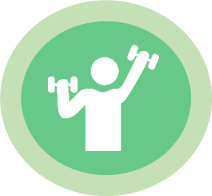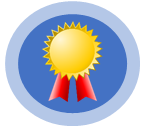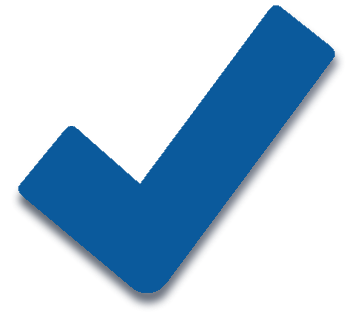Physical and Health Education

 Physical and mental well being is essential to living a full and productive life. It is important for students to develop strategies that lead to healthy habits for maintaining a healthy lifestyle that contributes to physical and mental well being. Included in this curriculum area is sexual health education - physical, emotional, mental and social well-being in relation to sexuality.”
Physical and mental well being is essential to living a full and productive life. It is important for students to develop strategies that lead to healthy habits for maintaining a healthy lifestyle that contributes to physical and mental well being. Included in this curriculum area is sexual health education - physical, emotional, mental and social well-being in relation to sexuality.”
The BC K-12 Physical Education and Health Curriculum aims to ensure that learners have the knowledge, skills, and understandings to be safe, active, and healthy throughout their lives.
On this page:
- Physical and Health Education Curriculum – Students with Visual Impairments
- Connections to the Expanded Core Curriculum
- Resources to Support Instruction
- References
Physical Education and Health - Students with Visual Impairments
Students with visual impairments benefit from the thoughtful and specific teaching of sexual health concepts. They participate in sexual activities at the same rate as their sighted peers (Kelly & Kapperman, 2012) but may not have access to the same information or incidental learning that their sighted peers do. As this is a value-laden subject area, educators need to be aware of their own value systems and those of their students and their parents as this may have an impact on how health information is conveyed and received.
Researchers have found that students with visual impairments benefit from pre-teaching of concepts in a private and safe environment before attending a session with their sighted peers. Students with visual impairments do not want to be treated differently than their sighted peers. They do not want any attention drawn to them during a sexual education class with their sighted peers, for instance, being asked to sit closer to watch a video or have an educational assistant sit with them to describe the video, or any instruction specific to them because of their visual impairment.
Examples of Adaptations for Physical Education and Health
- Explicit teaching of assertiveness skills to increase confidence and self-esteem in uncomfortable situations.
- Explicitly teaching body language concepts - this can be an abstract concept for students with visual impairments.
- Use tangible objects that allow students to explore in a discreet environment so that they can take their time in handling and manipulating objects to become familiar (e.g. condoms, anatomically correct models).
Connections to the Expanded Core Curriculum
Knowledge and skill development in the Core and Expanded Core Curricula are mutually reinforcing and together enrich student learning. Below are examples of connections between Physical Education and Health and the ECC.
 Social Interaction Skills
Social Interaction Skills
- Students develop the skills necessary to form healthy friendships and later healthy romantic partnerships as they grow. (Advocates for Youth, 2015).
- Students use knowledge of body language and social cues to develop and navigate communication skills effectively.
Sensory Efficiency Skills
- Use of a monocular to observe a scoreboard while waiting for a turn in a track and field event.
- Adapting a sport court using high contrast floor tape.
- Placing sound sources (e.g., beeper) for any activity that requires targeting/throwing (e.g., archery).
 Self-Determination Skills
Self-Determination Skills
- Students are able to manage personal hygiene matters.
- Students use knowledge of assertiveness skills to indicate consent and comfort levels when on a date with a potential partner.
- Students develop an understanding that they are responsible for their own behaviour and the associated consequences.
- Students practice contraceptive measures to understand the risks associated with becoming sexually active.
Resources to Support Instruction
PRCVI Library Catalogue
- Gravelle, Karen. (2017). What’s going on down there? A boy’s guide to growing up. Bloomsbury, USA.
- Sexuality education resource for students.
- Gravelle, Karen. (2017). The period book: a girl’s guide to growing up. Bloomsbury, USA.
- Sexuality education resource for students.
- Lieberman, L. J., Ponchillia, P. E., & Ponchillia, S. K. V. (2012). Physical education and sports for people with visual impairments and deafblindness: Foundations of instruction. New York, NY: American Foundation for the Blind.
- Professional resource with adaptations to physical education instruction as well as adapted sports for visually impaired learners.
Web-Based Resources
- Camp Abilities - Instructional Materials
- Series of videos, tip sheets, and checklists on a wide range of physical education topics including adaptations for swimming, running, basketball, among many others.
- Haegele, J. A., Lieberman, L. J., Columna, L., & Runyan, M. (2014). Infusing the Expanded Core Curriculum into Physical Education for Children with Visual Impairments. Palaestra, 28(3).
- Article highlights points of intersection between the nine areas of the Expanded Core Curriculum and physical education and strategies for integrated learning opportunities.
- Davies, J. (1996). Sexuality Education for Children with Visual Impairments. Retrieved from https://www.tsbvi.edu/materials-items/3254-sexuality-education-for-children-with-visual-impairments#physical
- HTML version of a Canadian book on sexuality education. Chapter topics include: Effects of visual impairment on sexual development; gender identity, and; personal safety.
- Lieberman, L. J., & Linsenbigler, K. (2017). Teaching recreational activities to children and youth with visual impairment or deafblindness. Palaestra, 31(1).
- Article geared to general education audiences with suggestions for inclusive physical education and adaptations for visually impaired learners and those who are deafblind.
- Schroeder, E., Goldfarb, E., Gelperin, N. (2015). Rights, Respect, Responsibility A K-12 Sexuality Education Curriculum Teacher’s Guide. Washington, DC.
- US curriculum with topics including notes on addressing confidentiality, answering student questions, and fostering inclusive spaces.
- SIECCAN. (2019). Canadian Guidelines for Sexual Health Education. Toronto, ON: Sex Information & Education Council of Canada (SIECCAN).
- Topics include the core principles of comprehensive sexual education and strategies for the planning, delivery, and evaluation of sexual health education.
References
Kapperman, G. & Kelly, S. (2013). Sex Education instruction for Students Who are Visually Impaired: Recommendations to Guide Practitioners. Journal of Visual Impairment & Blindness, 107, 226-230.
Krupa, C., & Esmail, S. (2010). Sexual health education for children with visual impairments: Talking about sex is not enough. Journal of Visual Impairment & Blindness, 104, 327-337.
Schroeder, E., Goldfarb, E., Gelperin, N. (2015) Rights, Respect, Responsibility A K-12 Sexuality Education Curriculum Teacher’s Guide. Washington, DC.
Quicklinks
 Check out the Physical and Health Education Curriculum category in #Outreaching - the blog of the PRCVI Outreach Team.
Check out the Physical and Health Education Curriculum category in #Outreaching - the blog of the PRCVI Outreach Team.